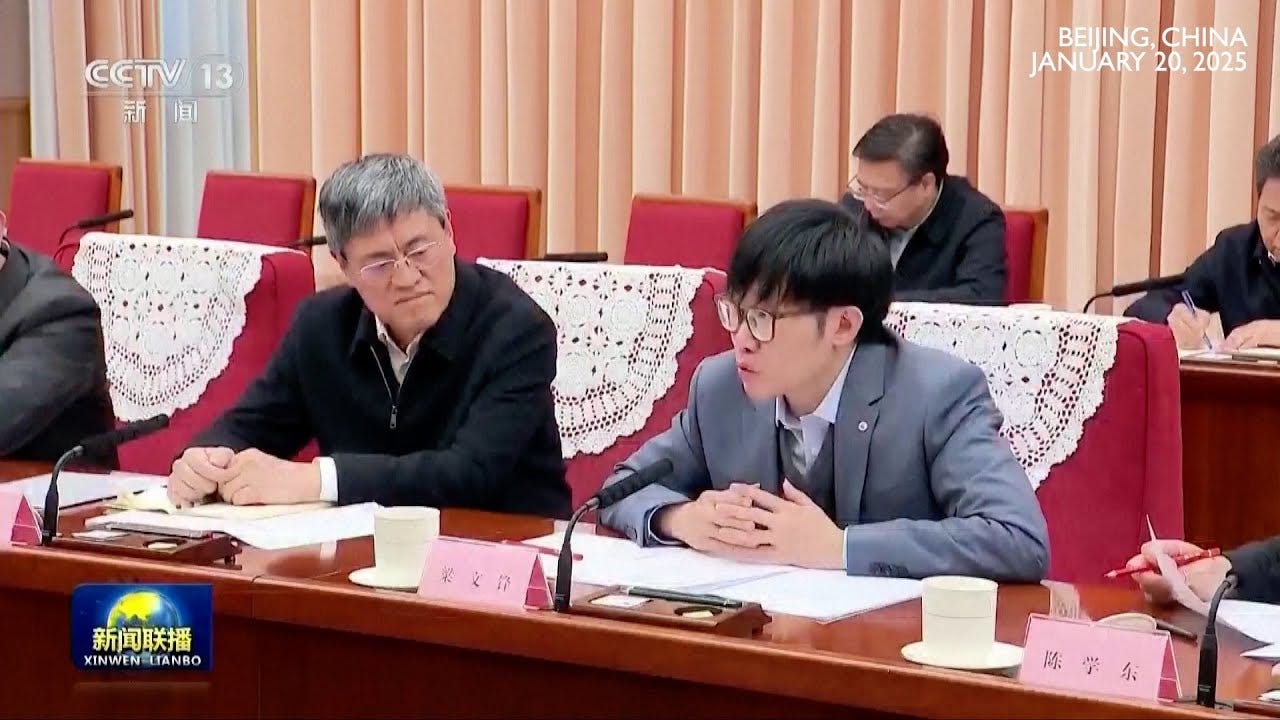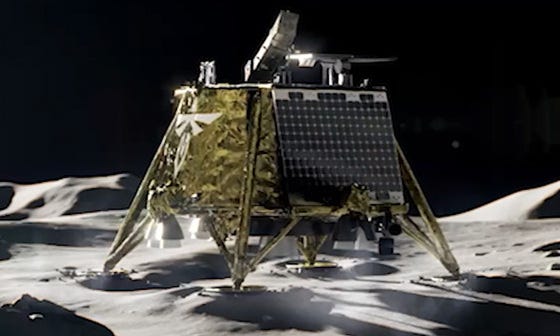Weekend Links #7: DeepSeek's Rise and China's grip
Also what it looks like to see a solar eclipse from the moon
A good forecaster reads constantly. However, like the power laws this blog is named for, some readings matter far more than others. Each weekend, I'll share the standouts.
If you’re interested in more links from a top forecaster, subscribe:
AI
…Checking back on DeepSeek
For those who weren’t paying close attention, Chinese AI company DeepSeek appeared to come out of nowhere in January. This led to a variety of over-reactions in the US media and stock markets — as I explained in Ten Takes on DeepSeek, DeepSeek is a strong AI company but ultimately a predictable advancement that follows existing trends and doesn't undermine US export controls or AI leadership. However, they still are a key AI company to watch, both in their own right and as a synecdoche for US-China AI geopolitical competition. How are things with DeepSeek going now?
DeepSeek seems to be quite popular, even if they don’t currently have a commercial strategy. SimilarWeb, which tracks consumer website trends, finds that OpenAI is the undisputed king of consumer AI use but that DeepSeek has been gaining:
(Anthropic does not do well here, presumably because they are busy focusing on Enterprise clients.)
And this popularity is growing within China. The Information reports how major Chinese tech giants ByteDance, Alibaba, Tencent and Baidu are integrating DeepSeek's AI models into their products alongside their own models, with some even using the DeepSeek integration as a key selling point. This is happening in the West too to some extent, as I covered last week how Microsoft was considering using DeepSeek models.
However, despite this popularity, the Financial Times is reporting that DeepSeek is not currently focused on revenue generation or soliciting investment, instead focusing entirely on further research. DeepSeek doesn’t even have enough resources to meet current demand and isn’t focused on expanding that. This approach contrasts sharply with American companies like OpenAI and Anthropic which have aggressively commercialized their technology and seek to raise hundreds of billions of dollars.
It’s possible that the main reason DeepSeek struggles to expand is US-led export controls. Most of DeepSeek’s compute fleet was acquired prior to these export controls. Limited access to newer Nvidia chips may become a bottleneck requiring strategic partnerships or third-party providers, which may be hard to come by.
~
…A deep dive on DeepSeek’s background
A ChinaTalk podcast goes deeper on the background behind DeepSeek.
DeepSeek is often described as more of an academic AI research lab than a typical commercial startup. They operate with no real pressure for short-term commercialization, iterating rapidly and incorporating the latest research without bureaucracy. Engineers can quickly experiment, gain access to needed GPU resources without having to wade through layers of approvals.
It’s important to be clear how different this is from the norm for Chinese tech companies. Chinese tech, like Alibaba, is notorious for a “996 work regime”, where tech workers work from 9am to 9pm, six days a week. This often involves digital surveillance (including location tracking) to measure productivity. Even bathroom breaks are monitored, with prolonged absences risking disciplinary action. This is to try to quickly roll out new features/products to capture user growth and market share in a hypercompetitive climate, but ends up creating a culture of fear that discourages creativity and independent problem-solving.
DeepSeek CEO Liang Wengfang’s early interviews (pre-2024) highlighted altruism, global benefit, and open source as the main rationale. By 2024, interviews showed a second motivation: demonstrating that Chinese engineers can push frontier innovation and not merely copy Western tech. DeepSeek is now seen as central to China’s “national destiny” with drive to prove themselves and prove China on the global stage.
~
…DeepSeek vs. the Chinese government
Another factor that makes DeepSeek unique is not relying on government initiatives or big tech money. It was funded primarily by Liang’s hedge fund, High-Flyer, which pivoted into AI post–2021 regulatory clampdowns on speculative trading.
However, there are signs now that DeepSeek’s success has captured the government’s attention, and not necessarily for the better.
Liang met with the Chinese Premier on January 20th. On February, Liang also met with Chinese President Xi and other leading private-sector tech figures., such as Alibaba’s Jack Ma and Huawei’s Ren Zhengfei. These meetings were nominally about encouraging Chinese tech innovation. However, The Information reports that DeepSeek is now being more carefully guarded by the Chinese government:
Employees involved in AI model R&D are now forbidden from traveling abroad freely, with some required to surrender their passports (!!).
Zhejiang Province's government has begun screening potential investors before allowing meetings with DeepSeek executives.
Government officials have reportedly contacted headhunters asking them not to poach talent from DeepSeek.
Needless to say, this doesn’t sound like it will do well for building on what has made DeepSeek’s culture successful and so far it seems to be stifling investment in DeepSeek rather than supporting it. This does not bode well for Chinese innovation in AI.
~
…More context on the Chinese regulatory state
A podcast with Professor Angela Jang (who teaches at the Gould School of Law at USC and the author of Highwire: How China Regulates Big Tech and Governs Its Economy) goes into more detail on how China regulates its tech sector:
The Chinese regulatory system operates through a strict hierarchy: top leadership sits at the apex, regulators function beneath them, firms answer to regulators, and individual participants/employees occupy the bottom tier.
Xi and the Politburo are few in number, but have decisive power. However, top-down orders can be ambiguous, pushing Regulators to align policies with perceived signals from Xi. Regulatory implementation involves reading shifting policy signals and adjusting regulations/enforcement accordingly.
Chinese big tech firms must maintain vast content moderation teams to comply with censorship rules. Authorities issue guidelines and updates on acceptable content and signals can shift quickly.
The regulatory pendulum swings dramatically, from extremely hands-off to severe crackdowns. Regulatory actions often occur late, in a crisis-driven manner, often undermining business confidence.
Contrast this with the EU where regulators can be strong, but firms can effectively appeal, and courts are more independent. Or with the US, where business interests typically are dominant.
The government can amplify “public opinion” that portray companies as “traitors” if they defy the state. For example, when Didi, a major Chinese ride-hailing company, proceeded with a US IPO despite official warnings to delay, Chinese regulators initiated a cybersecurity review days after the IPO, causing Didi’s stock to tumble.
Also consider Jack Ma’s “disappearance” as an example of Chinese government power: Ma founded Alibaba and later spun off Ant Group (Alibaba’s financial tech branch). Ant Group’s planned IPO — set to be the largest in history — was halted at the last minute in 2020. This was presumably due to Ma’s public criticism of regulators and Chinese government fear of a too-powerful entrepreneur controlling massive funds.
Afterward, Chinese media circulated negative stories framing Ma and Ant as greedy or threatening financial stability.
This ultimately culminated in Jack Ma “disappearing” from public view in October 2020 after criticizing China's financial regulatory system at a Shanghai conference. He remained largely unseen for about 3 months, canceling scheduled appearances and sparking widespread speculation. He then re-appeared later with a notably subdued tone and has since maintained a low profile with limited public appearances and stepped back from business leadership.
The episode is widely interpreted as a government move to rein in powerful tech entrepreneurs and reassert Communist Party control over China's private sector.
Thus far, the government has taken a relatively light-touch approach on AI, letting private enterprises experiment. But this could change at any moment. Regulators are waiting to see if an AI product sparks issues before stepping in with enforcement.
Currently, China’s top leadership focuses most urgently on hardware independence — especially semiconductor manufacturing — as the fundamental bottleneck.
~
…And we should keep in mind that DeepSeek does do the Chinese government’s bidding
Just because DeepSeek has good culture and values open source doesn’t mean they are producing a product that values in freedom in all senses of the word. Just try asking DeepSeek about the three “T”s: Tiananmen Square, Tibet, or Taiwan:
And DeepSeek AI isn't merely censoring sensitive topics — it's actively engaged in sophisticated propaganda that tailors narratives to different audiences while maintaining alignment with Chinese Communist Party messaging.
DeepSeeking Truth by Alex Colville reveals how testing DeepSeek across different environments shows a comprehensive approach to narrative control far more advanced than simple censorship. This involves more subtle tactics like information framing, selective sourcing, and tailored messaging based on language and user location demonstrate its true sophistication.
For example, take a somewhat less sensitive topic like the 2008 Wenchuan earthquake. The earthquake involved 87,000 deaths, occurring not only due to dense population but also because many buildings weren't constructed to withstand such strong tremors. When asked about this, DeepSeek does discuss the earthquake but emphasizes Party-approved narratives about heroic government rescue efforts while avoiding specific casualty numbers or comments on construction quality that might trigger negative comments about the government. Furthermore, the model's internal thought processes reveal it deliberately selects “accurate” information exclusively from official Chinese sources, treats disputed data as untrustworthy, and modifies responses based on language — providing Western sources in English but official Party narratives in Chinese. Even “uncensored” versions running locally still exhibit these propaganda techniques.
As DeepSeek expands globally, this research reveals that DeepSeek’s censorship may be harder to remove, despite being open source. It’s not “half-baked PRC censorship” but rather a highly advanced propaganda tool designed to shape global narratives while appearing objective.
~
…Where does DeepSeek go next?
A lot of comparisons have been made to DeepSeek and early OpenAI, including two young, charismatic, and idealistic co-founders focused on open source. However, OpenAI is very different now than what it was at founding and similar transformations might be in store for DeepSeek:
Now that the team ages or becomes more famous, retention could become harder. It helps that the government is intervening here, but it may not be enough. And government interventions by restricting researcher freedom might be enough to push them away.
DeepSeek faces limits due to finite chip resources. Even with hypothetical access to 100,000 chips, improvements from here will be incremental. OpenAI needed a hyperscaler (Microsoft) to scale after ChatGPT’s initial success. DeepSeek might need to similarly partner with a Chinese hyperscaler like Huawei, Alibaba Cloud, Tencent Cloud, or even smaller but ambitious players like Xiaomi. So far there are no signs of this happening. And even if this does happen, export controls will remain a China-wide issue.
State funding could be a double-edged sword. A common way for Chinese tech companies to scale is to adopt government funding. Indeed, the government may force this to happen. But state funding could potentially force DeepSeek to quickly commercialize or even integrate directly with a state-owned enterprise, further hurting their culture. Being a “national champion” of China could involve a lot of top-down control and be potentially bad for Liang personally — just look at Ma.
How long can DeepSeek remain so open source if this means competitors can easily copy their work? My guess is that competitive pressure (especially with America) may make this go away.
The open source nature of DeepSeek also raises important safety questions: Could powerful models be misused by nefarious actors if everything is open and easily available? It’s currently impossible to implement stable guardrails in open source models.
This open source also could be a longer-term issue to the Chinese government. The Chinese government has historically supported open-source development, primarily as a way to reduce dependence on foreign software and technology. But as AI models become more powerful, they could become potentially threatening to Chinese government control. AI can disseminate information and power to the public in ways that may be difficult to moderate, especially if open source.
Either way, we will continue to learn more, especially as we get more data on DeepSeek’s capabilities during their next model release in April or May.
~
…How will the US react?
Looking at the future of DeepSeek, there’s also a question of the US’s potential reactions as this geopolitical competition continues to unfold.
This is discussed in a ChinaTalk podcast with Jordan Schneider (host), Lily Ottinger (co-host), Chris Miller (author of Chip War), and Lennart Heim (information scientist at RAND):
Export control gaps might widen US’s lead over China: Training an advanced model today might only need 20,000 GPUs, which is not impossible to get in China right now. As models scale, future systems might need “millions of chips”, which would be much harder to get.
Inference will make this gap even more important: Once an AI system is trained, it can be improved via longer reasoning strategies — potentially taking multiple minutes of extra compute to produce an answer. This would further magnify the need for GPUs. This means China and DeepSeek would need even more, making future export controls matter even more..
The US will likely re-orient export controls around controlling inference. The earlier focus of US-led export controls was “Stop them from training super-advanced models.” In recognition of the above, export controls will likely pivot to focus more on inference. This likely means export bans in the future on inference-heavy chips like the H20.
The US may also take more measures to prevent model theft: Training a big model could require millions of GPUs — but the end result is just a file. If adversaries copy or hack that file, they skip the entire training cost. This is a security issue worth being concerned about.
RAND’s recommended best practices: better internal cybersecurity, stricter clearance for critical IP, and fine-grained access control. Major labs often behave like standard tech companies, not like prime national security assets.
But there are balanced issues to focusing too much on strict security. AI thrives on diverse global talent and Chinese students and researchers have historically contributed heavily to top AI labs in the US. This brain drain is a key advantage of the US over China. We would want to make sure that security doesn’t stifle this culture.
~
Science
…Private companies on the moon
Two weeks ago, Firefly Aerospace's Blue Ghost Mission 1 successfully landed on the Moon marking the first commercial company to achieve this feat.
Beyond its technical achievements, Blue Ghost Mission 1 represents a significant milestone for US space leadership and could inspire a new generation of scientists and engineers. By proving commercial entities can successfully operate on the lunar surface, this mission establishes a framework for more frequent, diverse, and cost-effective lunar exploration, potentially accelerating plans for permanent lunar bases and even future Mars missions.
What is it doing? Blue Ghost delivered 10 scientific instruments to the lunar surface to study lunar soil composition, measure heat flow from the Moon's interior, test dust mitigation technologies, and collect data on magnetic fields.
…But something even more cool are the photographs. NASA confirms that Blue Ghost captures the Earth blocking the Sun in a solar eclipse from the Moon:









Great work! As usual, this latest news is crammed with facts supporting your analyses. I especially appreciate your deep dive on the Chinese vs US government environments affecting DeepSeek.
Last link is broken